
What’s the Damage?
Unquestionably some, potentially a lot. If you love (or used to love) maintaining a golden-bronze tan, you’ve unwittingly contributed to the aging of your skin. Sunbathing destroys the fibers that keep your skin looking firm and smooth, which leads to earlier wrinkles, blotches, and freckles. More important, tanning and sunburn contribute significantly to skin cancer.
Your odds of developing skin cancer are higher if you have pale skin, blonde or red hair, and/or blue eyes: all signs that your skin has low levels of protective melanin. If you endured three or more blistering sunburns before age 15, you’re at higher risk for melanoma, the most deadly form of skin cancer.
Trips to the tanning salon are particularly bad. Tanning beds, which may emit even more UV rays than midday summer sun, don’t give you a “safe” base tan. They actually more than double your risk of skin cancer, according to Brown University Medical School research.
While you can’t undo past sun sins, it’s never too late to start doing damage control now. Read on for tips to protect your skin-and even save your life.
Photo credit: © iStockphoto/Thinkstock

Slather on Sunscreen
Pick a broad-spectrum brand (which means it protects against both UVA and UVB rays) with SPF 15 or greater (many derms recommend using 30 or greater when you’ll be outside for long stretches).
Photo credit: © iStockphoto/Thinkstock

Apply In Advance
Rub on sunscreen 30 minutes before you head outdoors-not once you’re already parked at the beach. (This gives your skin time to absorb the lotion’s protective ingredients). Use an ounce-about a shot-glassful-and cover all body parts exposed to the sun. Applying a too-thin layer means you’re skimping on protection, so that SPF 15 or 30 is really acting as far less.
Photo credit: © iStockphoto/Thinkstock

Invest in a Broad-Brimmed Crushable Hat
One-third of all skin cancers strike above the neck, so it’s wise to wear a hat for extra protection. Each inch of brim may lower your risk of skin cancer by 10 percent! Carry it with you in your purse or tote bag so you can pop it on whenever you step outside.
Photo credit: © iStockphoto/Thinkstock
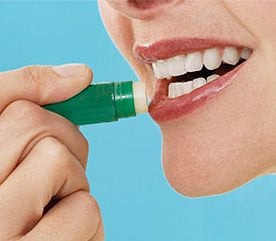
Use Lip Balm with Sunscreen
Lips are very sensitive to the sun-and skin cancers on the lips tend to be very aggressive and prone to spread-but we forget to tend to them when we go outside. When you apply sunscreen in the morning before you leave the house, put on some protective lip balm as well.
Photo credit: © Digital Vision/Thinkstock

Buy Celeb-Style Sunglasses
Yes, we’re encouraging you to splurge-especially the 27 percent of Americans who don’t regularly wear sunglasses. UV rays penetrate the internal structures of the eye, according to The Vision Council, and can incur serious vision disorders, including cataracts, eye cancer, and macular degeneration, over time. Make sure your sunglasses protect against both UVA and UVB rays and wear them year-round. Look for a pair that meets the criteria of the American National Standards Institute.
Photo credit: © iStockphoto/Thinkstock
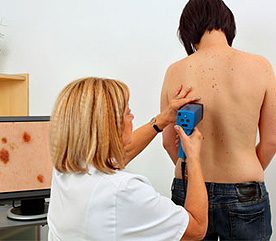
See a Dermatologist Every Year
Studies show that a skin doctor is more likely than a family doctor or gynecologist to spot trouble. Your doctor will inspect you for moles, growths, and any other unusual skin changes. If she spots any, she’ll send a small sample to be biopsied to determine whether it’s cancerous or benign.
Photo credit: © iStockphoto/Thinkstock
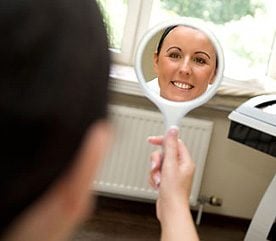
Do Your Own Skin Checks
After a shower, take a hand mirror into a well-lit room and examine your entire body-including between your toes. Becoming familiar with your own birthmarks, moles, and blemishes will allow you to spot worrisome changes between doctor visits.
Photo credit: © iStockphoto/Thinkstock
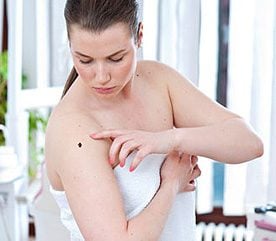
Watch for Danger Signs
Classic melanomas may show up as blackish/brownish splotches or moles with irregular edges. But this lethal cancer may also be red, pink, or waxy, or it can be a sore that just won’t heal. Other warning signs include itching, bleeding, sensitivity to touch, or obvious growth. Look for ABCDE as you inspect your moles: Asymmetry, irregular Border, darkening of Color, Diameter (larger than a pencil eraser), and Evolving.
Photo credit: © iStockphoto/Thinkstock
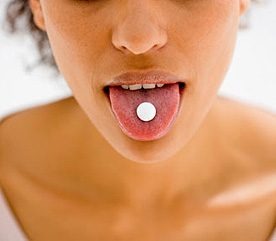
Be Careful in the Sun If You Take Medication
Any of the following drugs can make your skin more sensitive to sun damage: tetracycline, sulfa drugs and some other antibiotics; naproxen sodium; tricyclic antidepressants; thiazide diuretics (used for high blood pressure and some heart conditions), and sulfonylureas (a form of oral medication for diabetes). Check with your doctor for any medications you take that could make you more prone to burning.
Photo credit: © Jupiterimages/Pixland/Thinkstock

Eat a Skin-Saving Diet
Research shows that some foods-like citrus, green tea, carrots, and red bell peppers-may bolster the skin’s defenses against UV damage.
Photo credit: © Jim Arbogast/Digital Vision/Thinkstock